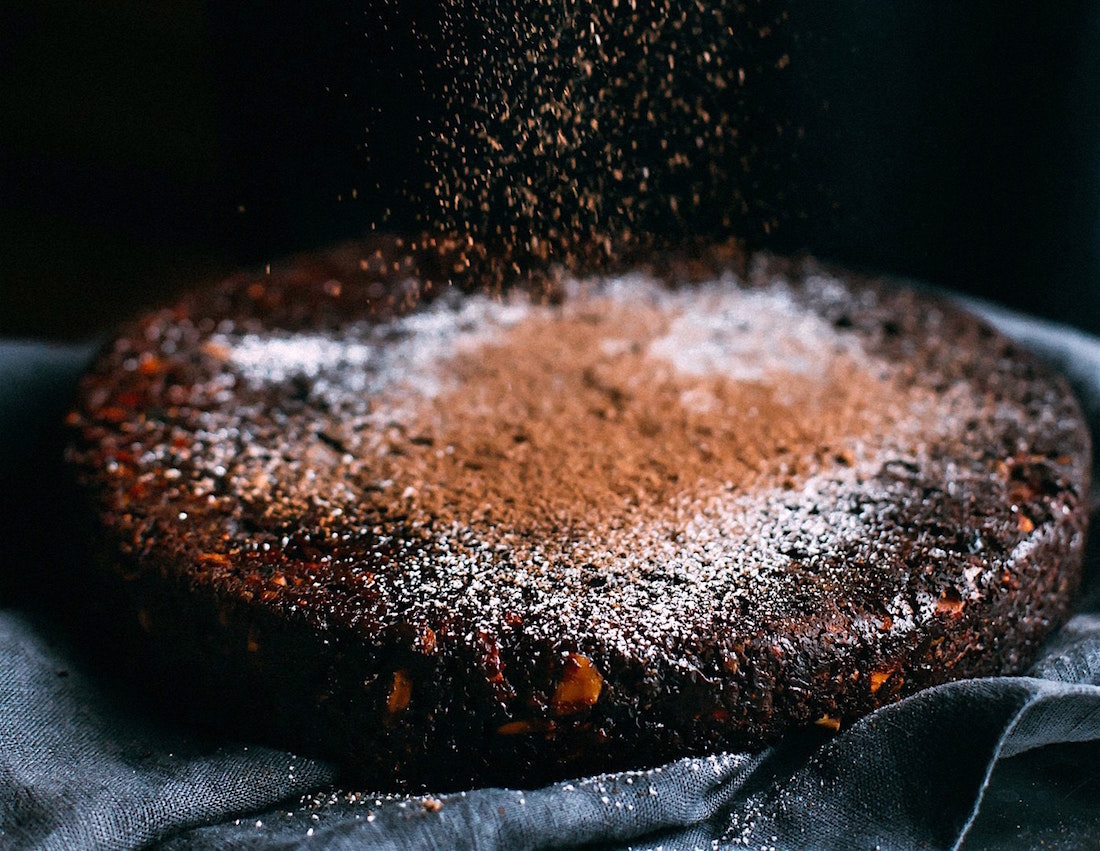When it comes to Christmas sweets, the Panpepato cannot be missed in any Italian house during Christmas. Over the centuries, this dessert has known to become famous around the world.
The Panpepato is a circular shaped sweet bread that is made and consumed during the Christmas holidays. The ingredients of this cake vary according to the geographical area and where it is made. Normally it contains almonds, hazelnuts, peppers, cinnamon, nutmeg and other ingredients. The preparation of this Christmas dessert is almost exclusively handmade to maintain the tradition and sometimes is prepared at home.
History and Origin of Panpepato
The history of this exquisite dessert dates back to Siena many centuries ago, approximately in the Middle Ages.
The first written testimonies are found in the convent of Montecellesi, near Siena. It is a document from 1205 that talks about the compulsory payment of taxes from the peasants to the nuns, the payment was made in quantities of bread with pepper and honey. This recipe could be born from the bread that was consumed in siena to which honey and fruit were added, the name was “panes melatos”. Over time, other seasonal fruits were added. Because of the fresh fruit, after a couple of days this bread would dry out and make the bread sour, hence the name “Panforte” (Panis fortis and in Latin fortis means sour).
The story goes that in the year 1000 it was when species such as peppers that came from the east began to spread and it was only for the exclusive use of the noble and rich people. At that time, many believed that the species had medicinal properties, especially pepper. In some cases the pepper was used instead of coins for some type of exchange. That is why the Panpepato was requested by the upper classes and was prepared only in convents or in places where spices were sold for the consumption of the rich.
The legend says that Sister Leta, a nun and chef at the Montecellesi monastery. One morning she found a lot of food gnawed at by mice in the pantry. That day she had to prepare food for the poor and she thought about using those ingredients. It was thus that in a pot she put to heat a little bit of honey, candied fruit, almonds, flour among other spices. During the preparation she was approached by a black cat that scratched her leg and the nun saw him with the image of the demon so she decided to throw the boiling pot at him to ward off the feline. Due to the shouting, the nun Sister Berta went to the kitchen to see what was happening and there together they tasted what was left in the pot that had an exquisite perfume and they called it “pane pepato”. As in all legends, this one has a bit of truth thanks to the documents found that confirm the melatos and pepatos bread from 1206 that belonged to the Montecellesi monastery.
The modification of the white panpepato that we know today was born in the year 1887. In that year queen Margherita and king Umberto Savoia visited Siena. As a gift to the royal couple, the master of the ceremony prepared a special version of the dessert and changed some of the ingredients and sprinkled it with some powdered sugar on top. This is how this modification of the sweet took the name “Margherita” in honor of the queen. In fact, if you are in Siena doing Siena tours do not forget to ask the guide for the best place to try one of these Christmas desserts.
Panpepato Recipe
300 grams of honey
150 grams of walnuts
150 grams of almonds
150 grams of dark chocolate
150 grams of raisin
150 grams of candied fruit
350 grams of flour
half a teaspoon of ground nutmeg
a tablespoon of black pepper
Preparation
The preparation of this Christmas sweet is very simple. It starts by roasting all the dried fruit in order to remove the skin. In a pot we will proceed to add the honey and the other ingredients, always mixing very carefully. Little by little we will incorporate the flour. Once the ingredients have been incorporated in a homogeneous way, we make a round shape with the dough and put it in the oven for 20 minutes at 170 degrees.
Once ready, we will remove it from the oven and let it rest until it is cold. It is advisable to consume the panpepato during the 5 days after the preparation.




